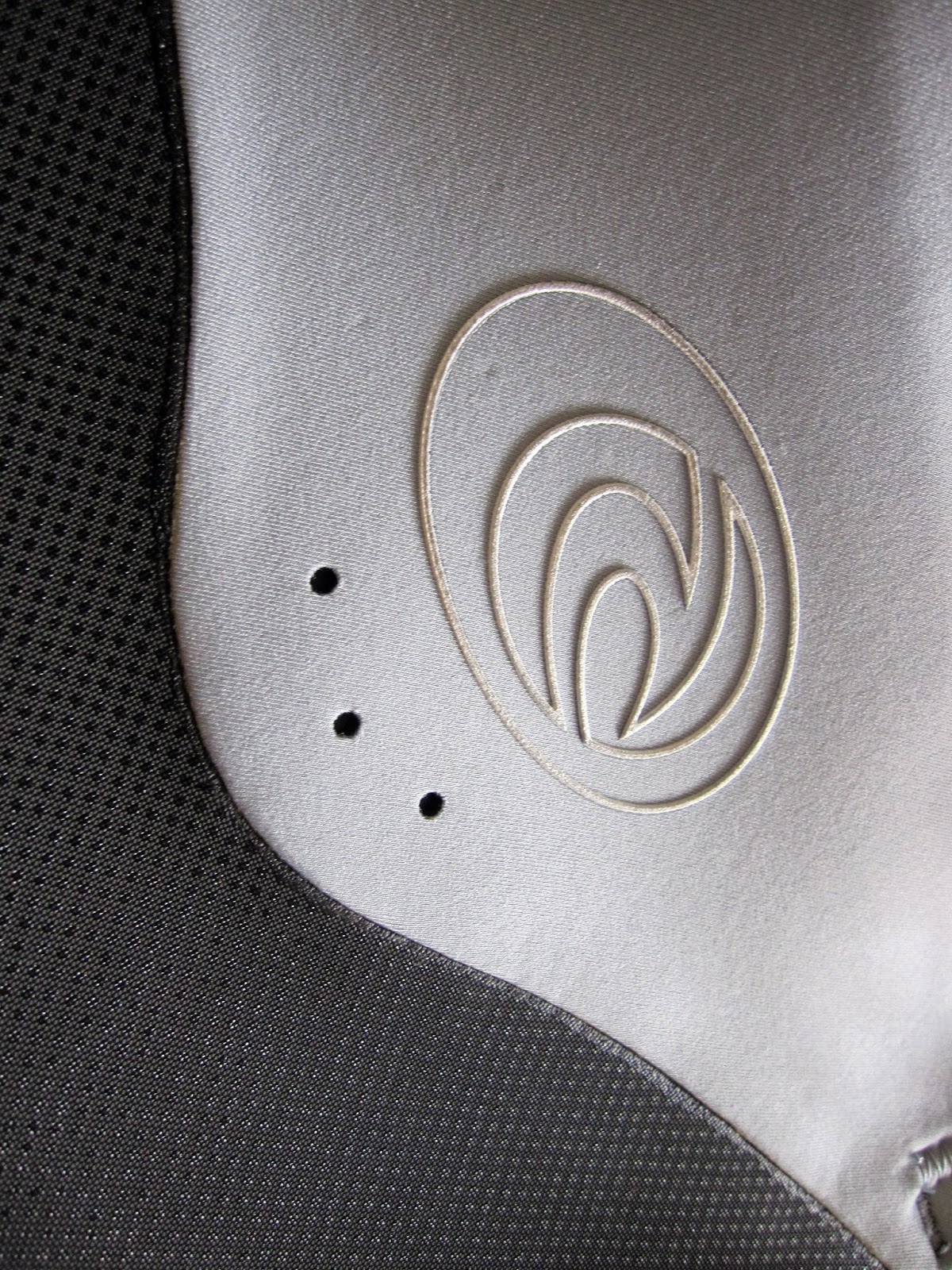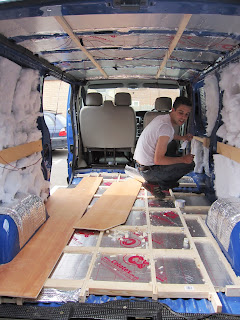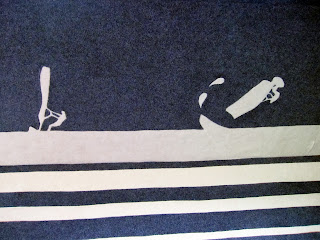As a regular surfer and windsurfer in the UK, I wear a winter wetsuit pretty much all year round. I also tend to spend most of my time in the North Sea, which is a fair bit colder than the warm(ish) waters off the SW coast, so 5mm is my go-to thickness. But every time I come to shop for a new wetsuit, there never seem to be (m)any consumer reviews, especially of women's/ladies' wetsuits. Loads for the guys; hardly any for the girls :-( So, here's one to try to redress the balance. I'll add more in the days to come...
Model: 2014 Ladies' Rip Curl Flashbomb 5/3mm
Entry: Chest zip
Colour: Purple, neon yellow, grey, black
Price: ~£260-280
The look:
The colours are what really attracted me to this wetsuit; black may be flattering, but it's been so over done! Gone are the days where there was only a choice between black, or black with a few splashes of colour. On this suit, there's pale grey over the shoulders, a dark grey, wind-proof chest section, neon yellow (same colour as a hi-viz jacket) flashes under the arms and on the sides of the calves, and mostly purple legs. This is definitely a cool, sporty wetsuit that'll make you stand out from all those beach clones.
The design is moderately flattering, but could be improved. I like the shape of the rubberised chest part, but I feel it could be extended slightly to stop lower down and make my legs look longer. If it were wider over my boobs, it would also make them look bigger (and balance them more with my hips), but that would be at the expense of the yellow flash and would move the seams closer to the underarms. If you have massive jubblies and long legs, then none of that will matter.
Rip Curl seem to like using the full-thickness, 5mm neoprene on the legs as well as the chest (O'Neill don't seem to do this). On the plus side, that means warm and toasty leggies no matter the weather, but on the minus, it makes them look like tree trunks. For my area of the world, you could get away with 3-4mm on some or all of the leg sections and they might look a bit less... upholstered(!)
Another problem (resulting from all that thick neoprene) tends to manifest itself behind the knees. If you've ever had a long session in the water, the thick material can start to bunch there and rub, which is not pleasant! Would it be possible for a suit manufacturer to thin out the back-of-knee bits somehow??
The fit:
Here I was a bit disappointed. I'm normally a fairly standard UK size 8, if such a thing exists, but on Rip Curl's size chart I seem to fall between sizes 6 and 8. I'm 5'5", and was worried I'd be too tall and heavy for a 6, so I went for the 8 (sadly not many places seem to have the 6 in stock). When putting it on, it was just about snug enough around hips and chest, but really loose around my waist.
As with so very many, many wetsuits, I find I have this big, loose and empty bit in the lower back area. This is a real problem with ladies' wetsuits that few makers ever seem to get right. Or perhaps I just have a big bottom and small waist. Hmm. I've had another Rip Curl wetsuit previously (a much cheaper model) and hoped that they might have improved the fitting, but alas, no. So far, the only wetsuit I've found that doesn't have this problem is my O'Neill D:Lux Mod.
The length was good on me, however, and came down nicely over my ankles and there was no downward pull on my shoulders. Plenty of room around the shoulder area too, which is great for all that paddling and waterstarting. All seals were good around wrists and ankles.
The neck seal was good around my skinny neck, but I wonder how it would fare after a year's use.
Getting in and out:
This is one of those described as 'chest-zip' entry, but you're essentially clambering in and out of the neck rather than the chest. If you've never had a chest-zip-entry wetty before, here are some tips: 1) Wear a long-sleeve, thin rash vest (not the thermal sort). This'll help slide the wetsuit off when it's time to get out (otherwise the neoprene just sticks to your arms and makes everything 10x more difficult); 2) These wetsuits are made with amazing superflex neoprene, so don't be too scared of stretching them to get in and out; 3) The drier it is, the easier I find it is to put on (dry it inside out) and 4) to get the damn thing off (and if, like me, you can't just pull it down over both of your shoulders) - ease down the sleeve on your non-dominant arm(!) by pulling the wrist seal over your hand and the shoulder part downward. This will take some time, but eventually you'll free your elbow, and the rest of that arm can come out. Next, you can roll the sleeve on your other arm downward and inside out, and the rest is easy.
I've had chest-zip suits before, and this one was actually very easy to get into indeed. The neoprene is really light and really flexible, so no problems there. Getting out of it, however, was tough! The biggest problem was pulling the neck seal back over my head - I was really worried I'd break some of the stitching. I'm hoping that will improve with time and use.
The features:
Super-flexible neoprene, which does help with getting in and out. I would say it's more flexible than the O'Neill suit I got a couple of years ago.
E4 quick drying technology. My last suit took days on end to dry, so this one's a huuuuuge improvement and can dry completely in a couple of hours on a sunny day.
Wrist and ankle seals are on the outside of the neoprene, and are about 1cm wide. At the moment they're good and tight, but I don't know how long they'll last. There are gaps in them to allow for stretching, which should help with their longevity.
Woolly insulative layer. It does look and feel very toasty and fluffy.
Taped seams. Apparently these are better for sealing out the water than other sorts of seams.
S Flex knees. I had these on my old Rip Curl suit and they did last really well, whilst taking plenty of punishment, so that's a plus. Only minus is that they can sometimes look and feel a bit bulky.
These are the drain holes for the chest zip section. They're present on the front and back.
I really want to take this into the surf and test it properly for flushing, etc., but need to try out the smaller size first (if I can find one in stock anywhere) to see if it's a better fit. When(if) I eventually do, I'll update this review with more info!
UPDATE: It turned out that the shop selling the wetsuit didn't quite get the sizing right. So the 8 was way too big. I went for a 6 (which on Ripcurl's site matches a UK 8, plus I'm 5'5"), but now that I've worn it out, I wish I'd gone for the 4. I've tries it out in the surf several times now and I can say...
Cons: The neck seal could do with being tighter.
As I'd feared, the thick fabric bunches behind the knees. Ergh. It can rub a bit after a while. Could definitely do with being thinner on the lower legs.
It doesn't dry thaaaat quickly, but after an hour or two on a sunny say it's not disgusting to put back on.
Getting the neck part back over my head to get it off is really tough (and I need help with it).
Go a size smaller than the Ripcurl size guide recommends.
Pros: The suit is amazingly warm. Really, beautifully warm.
Getting the rest of the suit off is easier than it was with my O'Neill when it was new.
It looks cool.





























































